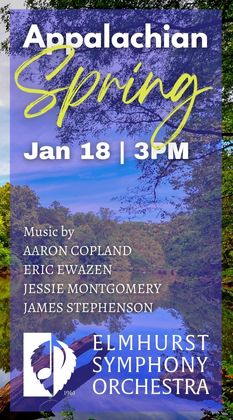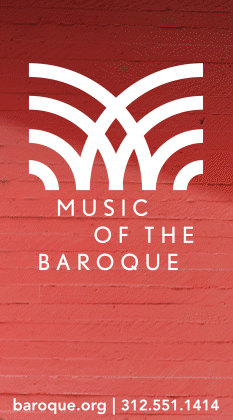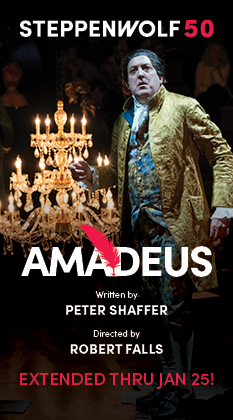Salonen’s “Nyx” proves sensational in inspired CSO program

The Chicago Symphony Orchestra routinely enjoys a high level of podium guests who can be counted on to deliver vital and distinctive performances.
But few regular CSO visitors combine the crackling performances and smart, offbeat programming that Esa-Pekka Salonen brings to his Chicago weeks each season.
For the second and final week of his CSO residency, the Finnish conductor devised a typically bracing program concentrated on Czech music—yet it was his own composition that provided the evening’s clear high point.
Salonen is the 2014 winner of the Nemmers Prize in Composition from Northwestern’s Bienen School of Music, and one could hardly wish for a greater example of his creative gifts than Nyx, heard Thursday in its Chicago premiere.
Completed in 2011, Nyx is titled after a lesser known, murky character from Greek mythology. The work doesn’t attempt any programmatic depiction of this figure, but rather takes its inspiration more broadly from her mysterious and nebulous qualities.
Nyx marked Salonen’s first orchestral composition in six years, following Helix from 2005. Cast in a single movement of around 18 minutes, Nyx is scored for a huge orchestra, including celesta, multiple winds and large percussion battery.
Salonen is not only one of our finest conductors but also one of our most compelling composers, and Nyx, along with his LA Variations and Violin Concerto stands among his most impressive works to date.
From the opening alternating horn calls, there is a surging, restless quality in this music that is intensely compelling and rivets attention. The music swells and accelerates to a pounding timpani-led section, which recurs and segues into punchy brass climaxes over seesawing violins, the windswept string writing echoing his compatriot Sibelius.
Yet much of Nyx is tranquil and transparent. The music often recalls Ravel and Debussy in its lucid simplicity and diaphanous scoring— shimmering textures of flutes and piccolos, high percussion and celesta. Call it Impressionism on steroids. Salonen maintains tension and keen forward momentum, yet, despite the large forces, much of the writing is of great delicacy and subtle coloring.
The performance under the composer Thursday night was nothing short of sensational. The CSO clearly believes in Salonen’s music and gave their considerable all, with a powerful full-tilt performance that was as refined and elegant as it was robust and dynamic. The playing was distinguished across all sections, particularly the percussion brigade and John Bruce Yeh, who brought an evocative, aria-like expression to the extended clarinet solos. Few contemporary works receive the kind of resounding audience ovation as Nyx did Thursday night and Salonen looked genuinely touched by the enthusiastic reaction.
Dvorak wrote one great concerto (for cello), one good concerto (for violin) and one not-so-good concerto (for piano).
The Violin Concerto is a rather unwieldy work and doesn’t possess the drama, expressive depth or finish of the Czech composer’s Cello Concerto. Yet the work has its attractions, notably a rich fount of melody, particularly in the Adagio, and the concerto can make a strong impact with the right soloist at the helm.
Christian Tetzlaff is one of those musicians that seem to divide opinion, with a slender, wiry violin tone and restless stage personality that sometimes results in rough-and-ready playing.
Teztlaff’s performance wasn’t exactly one to bask in the lyrical charm of the music. The German violinist’s hyperactive intensity took a more edgy 21st-century approach to Dvorak’s pastoral Romanticism. Yet, even with some passing technical roughness, Teztlaff’s performance provided its own rewards.
The soloist played with hushed tenderness in the segue into the Adagio, floating the intimate lullaby-like theme with sweet tone at a flowing tempo that avoided sentimentality. The Furiant-like finale with its insistent off-the-beat main theme provided an aptly vigorous closer.
Salonen’s clear-eyed accompaniment was likewise a bit lacking in affection yet the conductor’s taut urgency suited his soloist’s style, and the performance culminated in a fiery coda. Warm applause brought Tetzlaff back out for a gentle, lightly inflected encore of Bach’s Gavotte and Rondeau from the Violin Partita No. 3.
Music of Leos Janacek framed the concert, with the overture from Janacek’s final opera, From the House of the Dead, heard in its belated CSO subscription concert debut.
Written after the opera was finished, the brief prelude draws on an uncompleted violin concerto, with the solo lines well executed by concertmaster Robert Chen. As always, Janacek packs a lot into a small space, and the six minutes of music provides a compelling lead-in to his opera, the angular, boldly colored music pungently projected by Salonen and the orchestra. When are we going to hear a Janacek opera again in Chicago?
On an unusually meaty program, Janacek’s Sinfonietta closed the evening. Salonen’s dexterous balancing firmly kept the bombast at bay and concentrated on the clarity of lines and harmonic and contrapuntal ingenuity of this strange, ritualistic music—ancient yet spikily modern.
Yet there was ample excitement with Salonen emphasizing timbral contrasts and the raw, primeval quality of this music, written for a gymnastics festival, of all things. The six trumpets stationed in the terrace brought added gleaming impact to the fanfares that open and close the Sinfonietta, and the performance was polished as well as exciting. In addition to stellar brass playing, there were notable contributions form flutist Mathieu Dufour and timpanist David Herbert.
The program will be repeated 8 p.m. Friday and Saturday and 3 p.m. Sunday. cso.org; 312-294-3000.
Posted in Performances



